This is what happens when ChatGPT tries to create crochet patterns
We have seen enough of artificial intelligence to know the term is, quite often, a misnomer. Publicly available AI programs still churn out hilariously telling moments of non-intelligence as concepts like ears, the correct number of fingers, a natural voice cadence or cohesive complex thought continue to evade them. It’s fun to find these limits. It’s fun to convince ourselves that the computers are still a long way from swallowing our culture whole.
It’s even more fun to do it through misshapen, unholy craft projects.
ChatGPT, a publicly available language-learning AI, was not designed to create things like crochet or knitting patterns. However, since such patterns are a form of language, it is theoretically possible for the program to create one. Many curious crafters have tried their hand at this, with increasingly absurd results.
In addition to being hilarious, this exercise poses a very fascinating quandary: What happens when you ask a program specifically trained on language to create something outside of that sphere?
Let’s crochet some ChatGPT-generated patterns and find out.
Before we begin …
A few notes on my methodology:
For every crochet pattern I generated, I used the prompt “Create a crochet pattern for (blank).”
I followed the crochet pattern exactly. Where there were inconsistencies in the pattern, like a miscount of stitches or a nonsensical instruction, I tried for the most good-faith solution.
I chose objects and concepts that are not very common for crochet projects. There have been many issues raised about the extent to which programs like ChatGPT generate ideas already created by others, and I wanted to get as close to the bare heart of ChatGPT’s creativity as possible.
Test 1: ‘A banana’
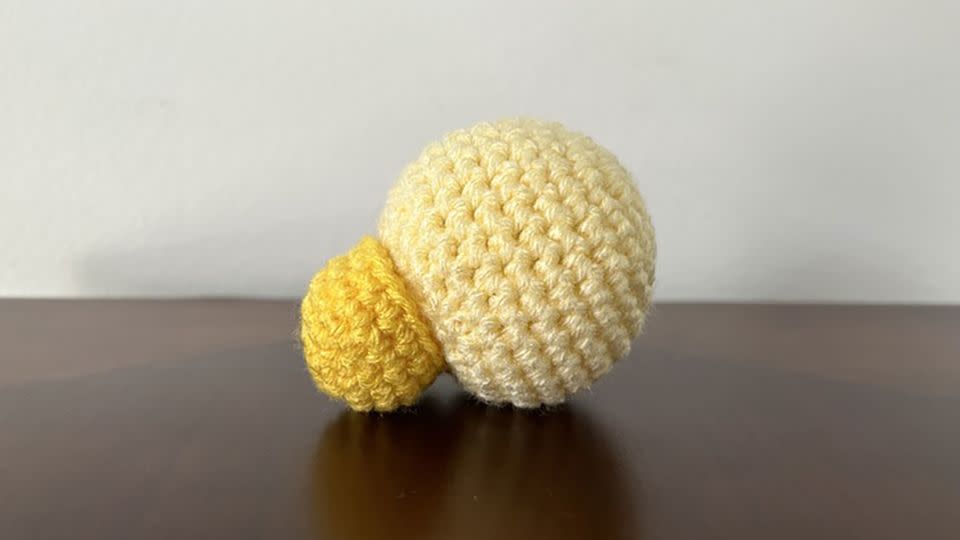
This was supposed to be the control project: A simple object with a distinct shape that has been reiterated in innumerable crochet patterns across the internet.
That is exactly what ChatGPT gave me. Was it a banana? Not even in the barest of senses. Was it something an extremely limited intelligence system floating in binary goo would approximate as banana? Perhaps.
At first glance, ChatGPT’s crochet patterns look and read exactly like a crochet pattern. They even have chirpy little introductions, and the program can clearly mimic terms any crafter would recognize – such as “work a stitch.” It also knew how many 3D crochet projects start: As a circle.
However, once the instructions progressed past a few common beginning stitches, the project usually devolved into one of two things: spheres, or complete nonsense. Here, it knew enough to provide instructions for a banana and a peel. Everything after that was just spheres.
Test 2: ‘A weird little creature’
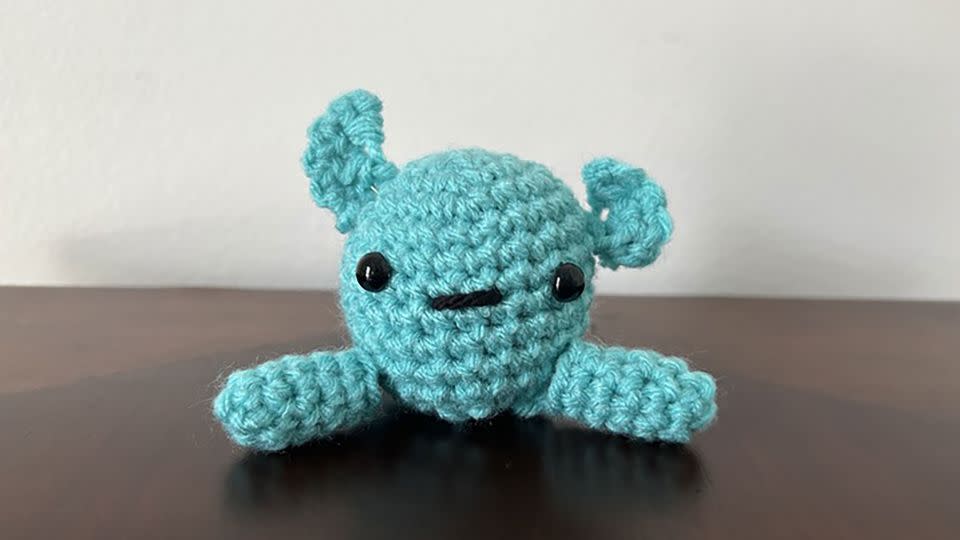
Since the banana radically recalibrated my understanding of ChatGPT’s crochet limits, I decided to dial it back. What would the program make of vague, qualitative language like “weird,” or “creature?”
You’ll never guess. (A sphere.)
This pattern resulted in a few different parts: A body (sphere), two tubular legs (long spheres), and two ears. It did not specify how to put them together, leaving the creator to determine their own level of “weird.”
While ChatGPT can create a linguistically cohesive pattern, it did significantly less well at specifying the “art” of it all, like how to assemble the work in any way that wouldn’t break the bounds of Euclidean geometry. In a traditional crochet pattern, instructions for assembly would note specific places and methods to attach pieces, along with photos or notes on particularly tricky steps.
“Feel free to experiment with different colors, yarn weights, and additional embellishments to make your creature unique,” the instructions concluded, after providing no guidance for assembly. “Happy crocheting!”
Test 3: ‘Baby Yoda’
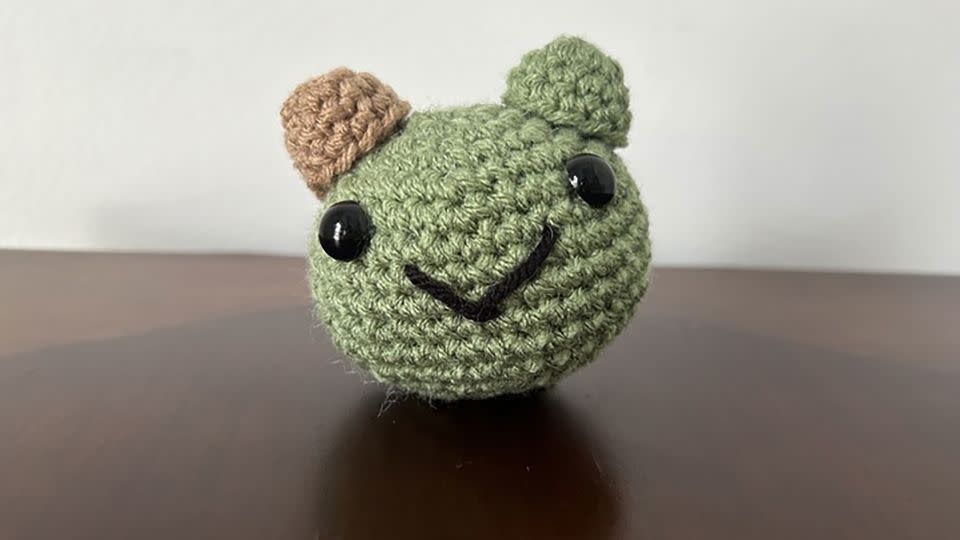
I knew this one was going to be a problem the moment it generated a note saying to make “one ear green, and one ear tan.”
In the introduction to the instructions, ChatGPT did flex its knowledge that Baby Yoda is also known as “The Child.” It then proceeded to render The Child as, you guessed it, a series of spheres.
This is a good time to introduce a little more background about how ChatGPT works and why it struggles so much with things like crochet patterns.
“The important thing to keep in mind is that this is a narrow AI,” said Casey Miller, a computer programmer from Kennesaw, Georgia. “Unlike what we would probably consider a general AI to be, ChatGPT has absolutely no idea what it’s spitting back at people or why.”
A narrow AI is trained on a specific skill. In ChatGPT’s instance, the skill is to reply in a way that sounds as human as possible. Theoretically, it would be possible to create AI that generated amazing crochet patterns, but that would require very specific training and programming.
“A general AI, for example, could beat anyone at chess and then turn around and create an insanely intricate crochet pattern. But a language AI doesn’t know how to crochet,” Miller continued. “It only knows how humans talk about crochet or how we typically convey patterns in writing. It’s not able to interpret what those patterns actually create.”
Test 4: ‘Antarctica’

Fair warning: This is the one that broke me. Everything you will see after this is an abomination, an attack on the natural order that should chill you to your core.
At least it wasn’t a sphere.
Again, I was interested to see what ChatGPT would do with a fairly abstract request. At first, it seemed to provide a very logical parry:
“Creating a crochet pattern to represent Antarctica would involve creating a textured surface that resembles the icy landscape,” ChatGPT’s response read. “Here’s a pattern that captures the essence of Antarctica.”
The pattern instructed me to create a beginning chain of stitches, and then build each row of stitches on top, which is how many flat crochet patterns like blankets are created. So far, so good. I started with 14.
The problem quickly became apparent when the instructions then told me to create five stitches into each existing stitch.
Do you see it? It’s barreling down on us, like an oncoming, ever-expanding train.
A few rows later, it gave me the same instructions. A few rows later, it repeated the instruction again: Five stitches in each stitch.
By the third row of increased stitches, I was no longer making 14 stitches into a flat shape. I was making 1,750 stitches into something that resembled a creeping coral reef. ChatGPT, with its nonexistent understanding of things like time, amounts of yarn, or the bounds of human sanity, had given me the crochet version of a fractal. Had I completed the pattern as written, I would be making more than 35,000 stitches into each row. Reasonably, I stopped at 1,750.
As I worked, I wondered whether I was unintentionally weaving a crude model of the universe. I pondered what equation I would need to solve to predict the way time, or maybe space, would arrange itself as it burst exponentially outward, row by row, and folded in on itself. If I knew how, could I locate myself here, now, nestled in some hidden crevasse?
When I showed this piece to others, I asked them to guess what it was. “A brain,” they said. “A loofah!”
No, you fools. It’s Antarctica.
Test 5: ‘A small model of the Burj Al Arab’

I’ll admit, this was optimistic of me. I thought something with a very specific and simple shape would be easier for ChatGPT to approximate, and a very recognizable and uniquely-contoured building like Dubai’s Burj Al Arab seemed like the perfect mix of spatial simplicity and crochet pattern obscurity.
At least it wouldn’t be a sphere!
(It was a sphere.)
It was very fun to see how ChatGPT took the things that, as a language model, it could easily know (The Burj Al Arab is in Dubai! It is a favorite among architecture enthusiasts! It has a sail!) and combined it with things it could never fathom (What is a sail! What is the dimensional limit of human creation!). The result was the Burj Al Arab, if it existed in “The Flintstones.”
Test 6: ‘A small model of the Burj Khalifa’
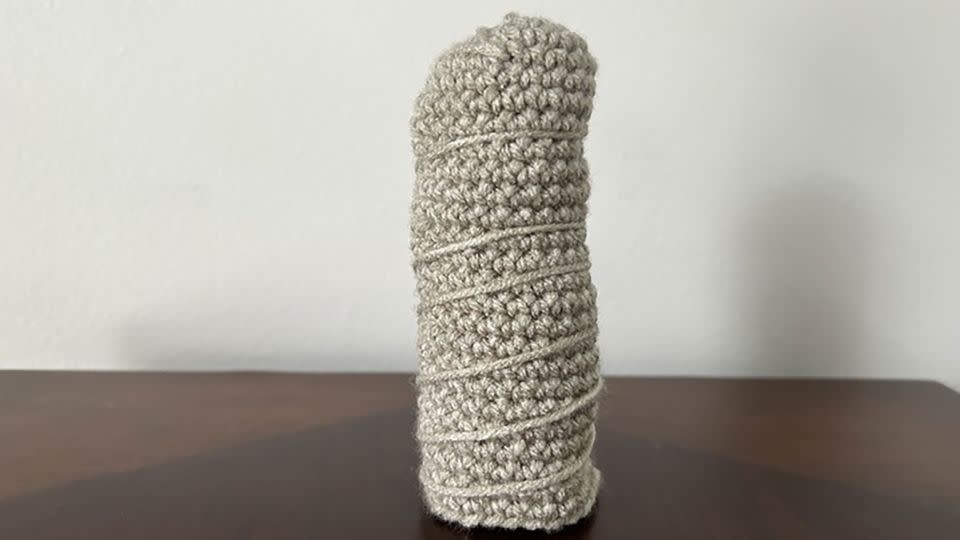
I saw potential in the Burj Al Arab test, and decided to choose another building that I thought for sure would break ChatGPT’s habit of rendering everything spheroid. The Burj Al Arab’s neighbor, the Burj Khalifa, seemed like a good choice. It’s so pointy! So tall!
Did you say a pointy tall sphere? ChatGPT can do that!
Now, if you’ve never been close to tears while crocheting something, I can say it is a singular experience. What was truly vexing about ChatGPT’s instructions, what was so nonsensical that it approached the beautiful entropy of human thought, was how the program perceived the concept of a spire and its relationship to the building it had me create.
After making the long nubbin of the main structure (a very inauspicious start), ChatGPT instructed me to wrap a length of yarn from the top of the building “down along the side of the building, forming a spiral pattern,” “gradually reducing the distance between each wrap.”
“Now you have your own small crochet model of the Burj Khalifa!,” the instructions chirped. “This iconic building can be a great display piece or a gift for architecture enthusiasts.”
In the words of T.S. Eliot, That is not what I meant at all;
That is not it, at all.
Test 7: ‘A flat heart’
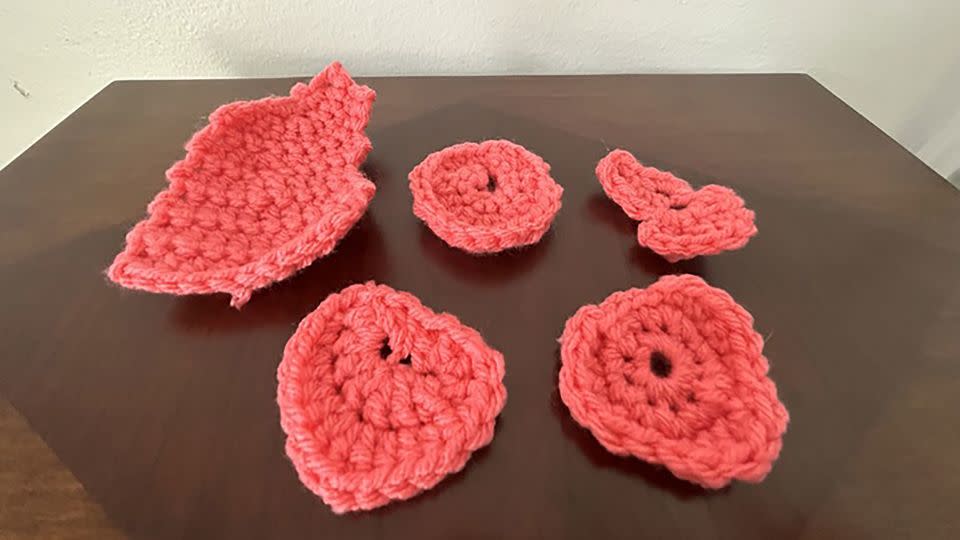
Maybe three-dimensional crochet is too much for a language-learning AI to handle. Maybe going all the way back to the basics would help it create something, just a single item, bearing even the foggiest resemblance to my prompts.
The initial result of this prompt was so nonsensical, I regenerated the response. Then I tried again. Creating these objects one after the other was like watching something struggle to be born. Eagle-eyed crocheters may recognize snippets of what could have been an intelligible heart pattern. By the fourth iteration, it was even producing a passable approximation of the shape. Was it learning, or, like a throng of monkeys on typewriters, was it just getting lucky?
I generated a few more patterns from this prompt and can assure you, it did not get any better.
If there is one piece of wisdom I gleaned from this experiment, it’s that human intelligence is fundamentally interdisciplinary. Language bleeds into sight, which tangles with memory or personality and so on. Artificial intelligence programs don’t really work that way. It may be able to do one thing really well – maybe even a few things. But once you push it past its assigned skill, it’s blobs all the way down.
For more CNN news and newsletters create an account at CNN.com

